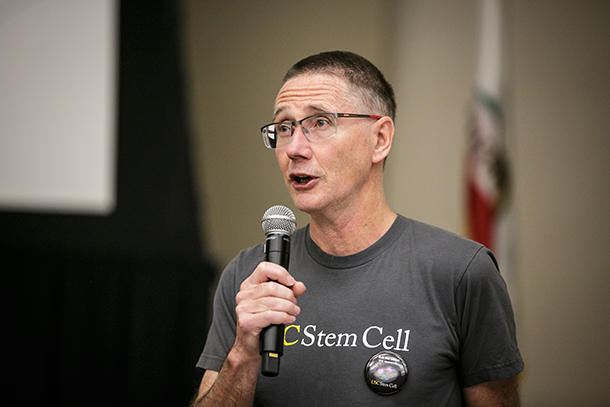Every minute of every day, your organs are using a complex language to communicate with each other about the basic physiological processes necessary for life — everything from blood pressure regulation to pH balance to metabolism. To decipher this little-known language, USC Stem Cell scientist Andy McMahon, PhD, has joined forces with top scientists at Harvard and Stanford universities under the auspices of the NIH Director’s Transformative Research Award.
Part of the National Institutes of Health (NIH) High-Risk, High-Reward Research program, the award will bring more than $4 million of funding to the McMahon Lab over the next five years. The award recognizes extraordinarily creative teams of scientists who propose research that could redefine existing paradigms and have a broad impact across the biomedical field. In 2018, the NIH Director recognized only 10 projects across the country with this exclusive honor.
The project was initiated by Norbert Perrimon, PhD, from the Howard Hughes Institute and Harvard Medical School. Perrimon will contribute his expertise in fly genetics and inter-organ interactions. McMahon’s group will take the lead on mammalian signaling and genetics. The lab of Steven Carr, PhD, at the Broad Institute of MIT and Harvard will serve as the experts in protein functions and interactions, and the lab of Alice Ting, PhD, at Stanford University will focus on protein labeling in the living cell.
“The goal of our collaboration is to pioneer a new way to identify and understand key proteins that enable organs to communicate with each other throughout the body,” said McMahon, W.M. Keck Provost Professor of Stem Cell Biology and Regenerative Medicine and Biological Sciences; chair of the Department of Stem Cell Biology and Regenerative Medicine at the Keck School of Medicine of USC; and director of the Eli and Edythe Broad Center for Regenerative Medicine and Stem Cell Research at the Keck School of Medicine of USC.
Together, the multi-institutional team will develop a new method to identify the proteins that serve as signals for inter-organ communication. This method involves using a tiny molecule called biotin as a tag, which they will attach to the sub-set of proteins in a specific organ that are destined to exit that organ to signal to distant organs, which are primed to receive the protein signals.
They will perform their experiments both in fruit flies, which have the advantage of being relatively simple organisms well-suited to swift exploration and optimization of the approaches, and in genetically engineered mouse models, which are more similar to humans.
In fruit flies, they will identify proteins connecting networks of organs involved in stem cell activity, reproduction, fat metabolism and many other important processes. They will also explore how exercise, cancer, diet and other stressors inflect these protein signals. Studies from the Perrimon laboratory already have demonstrated that key inter-organ regulatory processes have not changed much throughout the course of evolution and are conserved between flies and man.
They then will expand their experiments to mice, with an emphasis on kidney communication, a focus of the McMahon group, and interactions between the digestive system, muscles, liver, brain, heart and fat tissue.
“From a practical perspective,” McMahon said, “we are developing and validating a new tool that we hope can be widely adopted by other scientists, to broadly enhance our knowledge of normal physiology and disease. We also expect novel inter-organ regulatory factors to be a rich source for potential therapeutic actions.”
— Cristy Lytal


